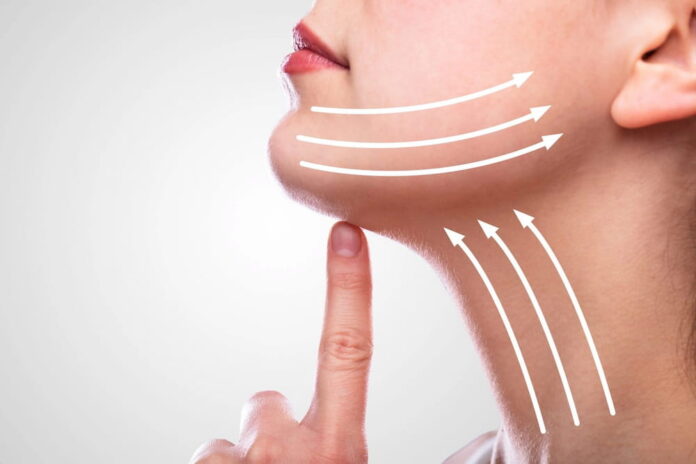Facelift surgery, which is also known as rhytidectomy, is a cosmetic procedure designed to address signs of aging by tightening the tissues and skin of the face and neck. While it’s often associated with achieving a more youthful appearance, the science behind facelift surgery goes deeper, involving anatomical changes, tissue manipulation, and understanding the aging process itself.
Understanding Facial Aging
The aging process affects the face in various ways. Over time, the skin loses elasticity, facial fat diminishes or shifts, and muscles weaken. These changes lead to wrinkles, sagging skin, and loss of definition in the neck and jaw. Factors such as genetics, sun exposure, lifestyle choices, and skin care practices influence the rate and extent of facial aging.
The Facelift Procedure
During a facelift procedure, a surgeon like Iteld Plastic Surgery carefully lifts and repositions the skin and underlying tissues to create a smoother, firmer, and more youthful appearance. Here’s a rundown of the key steps that are involved with it:
1- Anesthesia: A facelift typically starts with the administration of anesthesia to ensure the patient’s comfort. Depending on the extent of the surgery, options include local anesthesia with sedation or general anesthesia.
2- Incisions: The surgeon makes strategic incisions along the hairline and around the ears to lessen the amount of scarring that’s visible. These incisions provide access to the underlying tissues.
3- Tissue Manipulation: The surgeon lifts and repositions the facial tissues, including muscles and fat pads, to restore a more youthful contour. Excess skin is trimmed away as required.
4- Closure: Once the desired changes are made, the incisions are carefully closed with sutures or surgical staples.
How The Results Work
Facelift surgery produces dramatic results by addressing multiple aspects of facial aging:
– Skin Tightening: By removing excess skin and tightening the remaining skin, the procedure reduces wrinkles and sagging, resulting in a smoother and firmer appearance.
– Muscle Repositioning: As facial muscles weaken with age, they contribute to sagging and drooping. During a facelift, muscles may be repositioned or tightened to restore a more youthful contour.
– Fat Redistribution: Over time, facial fat can shift or diminish, leading to hollowed cheeks and sunken areas. A facelift may involve redistributing or adding fat to restore volume and fullness.
– Structural Support: The underlying facial structures, such as the SMAS (superficial musculoaponeurotic system), provide support and shape to the face. A facelift involves lifting and repositioning these structures to create a more defined jaw and neck.
– Stimulation of Collagen: The trauma caused by surgery triggers the body’s natural healing response, which includes the production of collagen—a protein that helps to keep the skin firm and elastic. This can further improve the long-term results of the procedure.
Advancements in Facelift Techniques
Over the years, advancements in surgical techniques have made facelift procedures safer, more effective, and less invasive. Minimally invasive techniques, such as the mini facelift or endoscopic facelift, involve smaller incisions and shorter recovery times while still achieving significant improvements in facial appearance.
Risks and Recovery
Like any surgical procedure, facelift surgery carries risks, including infection, bleeding, scarring, and nerve damage. The good news is that these risks can be reduced by choosing a qualified and experienced surgeon and following post-operative care instructions diligently.
Recovery from a facelift typically involves swelling, bruising, and discomfort, which gradually subside over several weeks. Patients are advised to avoid strenuous activities and follow their surgeon’s guidance to optimize healing and achieve the best results.
Did you find this helpful? Check out our other helpful articles on our website.
Read Also
- Understanding Breast Cancer in Men: Key Facts and SymptomsBreast cancer is often thought of as a disease that only affects women. However, men can develop it too. Although it is less common, early detection and awareness are important. Read on to learn key facts, symptoms, and ways men can take action to protect their health. How Common Is Breast Cancer in Men? Breast… Read more: Understanding Breast Cancer in Men: Key Facts and Symptoms
- Raising Awareness: Breast Cancer Facts for Older MenBreast cancer does not affect only women, and many older men do not realize they are at risk. Because the signs can be easy to miss, many men learn about the disease only when it has progressed. Learning the basic facts now can help you stay aware and respond early. If you want to protect… Read more: Raising Awareness: Breast Cancer Facts for Older Men
- How Regular Exercise Transforms Senior Living for the BetterGetting older is something everyone experiences, but how we age can be greatly influenced by the choices we make. One of the best ways for seniors to stay healthy, happy, and independent is through regular exercise. Staying active isn’t just about fitness-it can improve nearly every part of life. From building strength and energy to… Read more: How Regular Exercise Transforms Senior Living for the Better
- The Importance of Mammograms and Early Detection for Aging WomenAs women age, taking care of their health becomes even more important. One key part of women’s health is regular breast screenings. Mammograms are a simple but powerful tool that can detect breast changes early. Early detection can save lives by finding problems before they become serious. For aging women, staying informed and proactive about… Read more: The Importance of Mammograms and Early Detection for Aging Women
- Understanding the Importance of Routine Health Screenings for SeniorsDid you know that the global routine health screening market is expected to reach $105.93 billion by 2033? This highlights the rising focus on preventive healthcare. As we age, our bodies go through many changes. Staying proactive about health becomes more important with time. Routine health screenings for seniors play a vital role in maintaining… Read more: Understanding the Importance of Routine Health Screenings for Seniors
- Why Modern Retirement Facilities Are Vital for Chronic Disease CareToday’s retirement feels different from the past. Modern communities are bright, active, and full of life. They give seniors comfort while also providing the care needed for health and safety. For those living with long-term conditions like diabetes or heart disease, these places bring both support and peace of mind. Here, life doesn’t slow down-it… Read more: Why Modern Retirement Facilities Are Vital for Chronic Disease Care
- Understanding Breast Cancer Risks and Signs in Older MenMany people associate breast cancer with women. But did you know that breast cancer risk in older men is a significant health concern? Although it is rare, men can develop this disease, especially in later years. Understanding the risks, symptoms, and necessary preventive actions can lead to earlier detection and treatment, ultimately improving survival rates.… Read more: Understanding Breast Cancer Risks and Signs in Older Men
- How to Choose the Perfect Eyewear for Your Face Shape and StyleEyewear has evolved far beyond a simple vision aid—today, it’s a bold statement of personality, professionalism, and fashion sense. Whether you’re selecting your first pair or updating your look, the right frames can enhance your features, elevate your confidence, and even influence first impressions. But with endless options available, how do you find the perfect… Read more: How to Choose the Perfect Eyewear for Your Face Shape and Style









